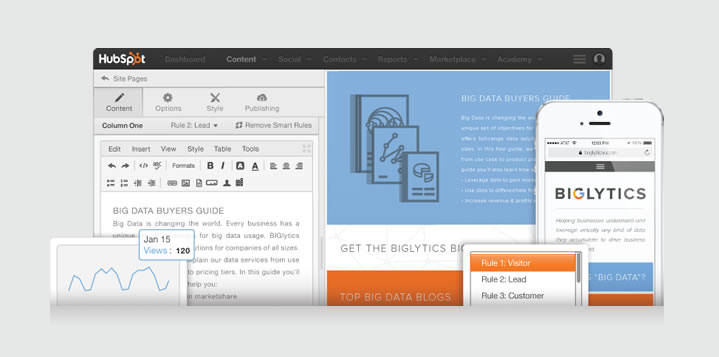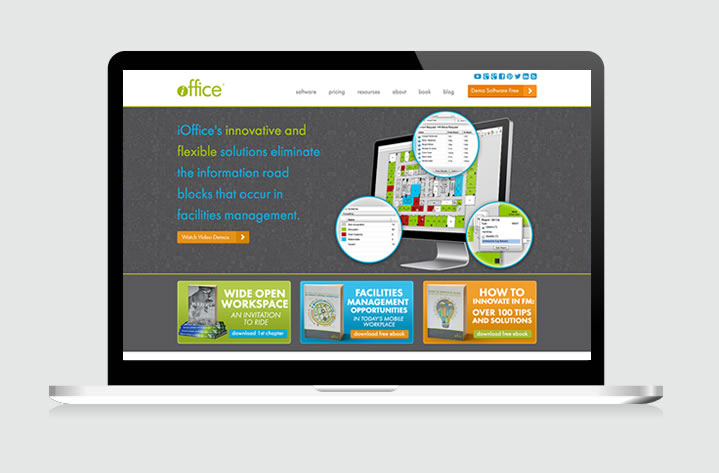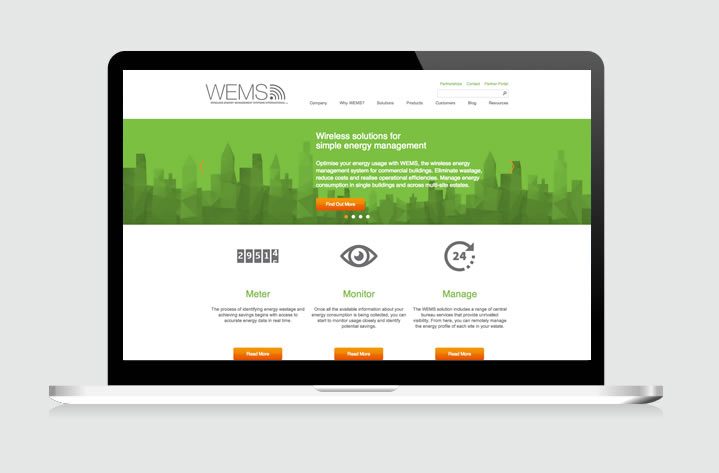HubSpot CMS: Five Key Benefits
HubSpot's CMS system has been 'in the wild' for about a year now - find out why you'll love features like its CDN, API and cloud interface. Read on...

During HubSpot's Inbound 2013 conference in Boston came the announcement of the brand new COS (content optimisation system) - a mobile-optimised, out-of-the-box content management system. Nearly one year on and with the countdown to Inbound 2014 well underway, we thought it a good time to discuss why Axon Garside, and our clients, have really taken to this new platform.
Everything in one place
Got an online presence? Of course you have! Social media accounts? By the bucketload! Blow-by-blow analysis of where your visitors came from, went to, bounced, exited and what they had for tea? Sorted! A managed email service to keep customers and potential customers informed of latest offerings? Errr, I think so...somewhere?
Problem is, with all these tools out there for you to promote your business, keeping track of them all isn't half time-consuming. The great thing about HubSpot is its overarching nature. It brings everything you should be doing online together under a single control panel. With the advent of COS and site pages, you can build every single page of your site within HubSpot itself.
That means no need for a clunky CMS with bolt-ons to try to handle forms and calls to action. The system is advanced and straightforward enough to allow easy construction from your home page to your site map. Then there's your landing pages, emails, blogs and calls to action - all in one place, all connected, all reporting back to the same 'base'. This enables you to make quality comparisons on your marketing strategies, carry out A/B tests to see what works best and receive clear and concise feedback from a single login. One site. Your bookmark toolbar will have never looked so empty!

Build it yourself
We've all seen the advert on TV. You know the one I'm talking about. How does it go again: "You've built your own business, now build your own website..." OK then, that's like saying "you've built your own business, why not knock up a nice new building to put your offices in", or "how about having a crack at designing your own company car"... All that said (tongue in cheek I assure you), there is an element of control that is so often craved by savvy marketing departments. Too often people are given lovely-looking websites with a hideous, unintuitive, folder structured, form-filling CMS that is difficult for them to navigate and add content to.
What's really different about HubSpot is the drag and drop functionality of the builder. It's really easy to work with and it allows you to create the building blocks for your site pages, which can then have the sculptured magic of cascading stylesheets applied to them. How simple or advanced you want to make the pages is completely up to you.
It offers simplicity if you don't want to mess with the underlying framework too much, but it also has the flexibility to be stretched and fine-tuned by any designer/developer you get to work on it for you. And unlike when you're using a generic platform CMS like WordPress to build your site, HubSpot will always give you the right site optimisation options to achieve solid rankings in search engines. So no matter what panda, penguin or other odd animal name Google gives to an update, you can rest assured that the HubSpot platform is up to date and ensuring you follow best practices.

Content Delivery Network
So Wikipedia says: "A content delivery network or content distribution network (CDN) is a large distributed system of servers deployed in multiple data centers across the Internet. The goal of a CDN is to serve content to end-users with high availability and high performance. CDNs serve a large fraction of the Internet content today, including web objects (text, graphics and scripts), downloadable objects (media files, software, documents), applications (e-commerce, portals), live streaming media, on-demand streaming media, and social networks."
"S'alright," I hear you say, "I've got fibre broadband and 4G, what's the point?" Well, speed is definitely of the essence when it comes to site optimisation. Google and other search engines will penalise your site in the rankings if your content is slow to load. Your visitors don't want to wait around for overstretched servers to do their job, and neither do search engine bots. It's a win-win to have a fast loading site. The HubSpot Content Delivery Network structure means the heavy-lifting for images and downloadable files is dealt with by servers dedicated to the job. The outcome is that the end user always gets an optimised for device content, swift response times and loading. And the bottom line is that your PageRank and therefore your position in the SERPs will improve.
The cloud!
No one loves FTPing files more than I do. And setting up databases - yep, that's the highlight of my day! The HubSpot COS CMS system removes concerns about the setup of files and who's editing what etc etc. Everything lives and is edited online, and everything is neatly organised inside the Design Manager. A simple measure that HubSpot took recently was to introduce a primary stylesheet, which is included in every template on your site, including the editor. So you now get probably the best live representation of what the page will actually look like as you edit it. Sounds simple, but the lack of this feature is actually what lets down many other CMS platforms.

API
Before you start thinking "I knew it, he's throwing acronyms at us now, typical tech..", it's the final point, so indulge me a little!
API stands for Application Programming Interface. It's basically a way of exposing a system's data (protected by a unique key in the case of HubSpot) for other systems to interpret and read, either with default addresses or with specific parameters passed to extract more refined information… Oh dear you've nodded off! OK, I'll get to the point. The HubSpot COS, although still young, has a myriad of features available already. However, with the API, it's also possible for your developer to 'hook' in and create the custom features you require.
It might be something as simple as a more graphical representation of blogs in your footer, like we achieved with our website for WEMS, or it may be that you need your CRM system to interrogate HubSpot for a list of marketing-qualified leads. With the API, HubSpot can do this. They've thought about it. It's not a plugin or something extra you have to pay for, it's just all your data, organised and ready for you to do whatever you need to. And whatever the size of your business, at some point you'll need that functionality. When you do, you'll be glad you picked a HubSpot COS solution.
For the new kid on the block, COS really has hit the ground running. It could help you do the same with your content marketing and lead generation.
 Paul Marshall
Paul Marshall